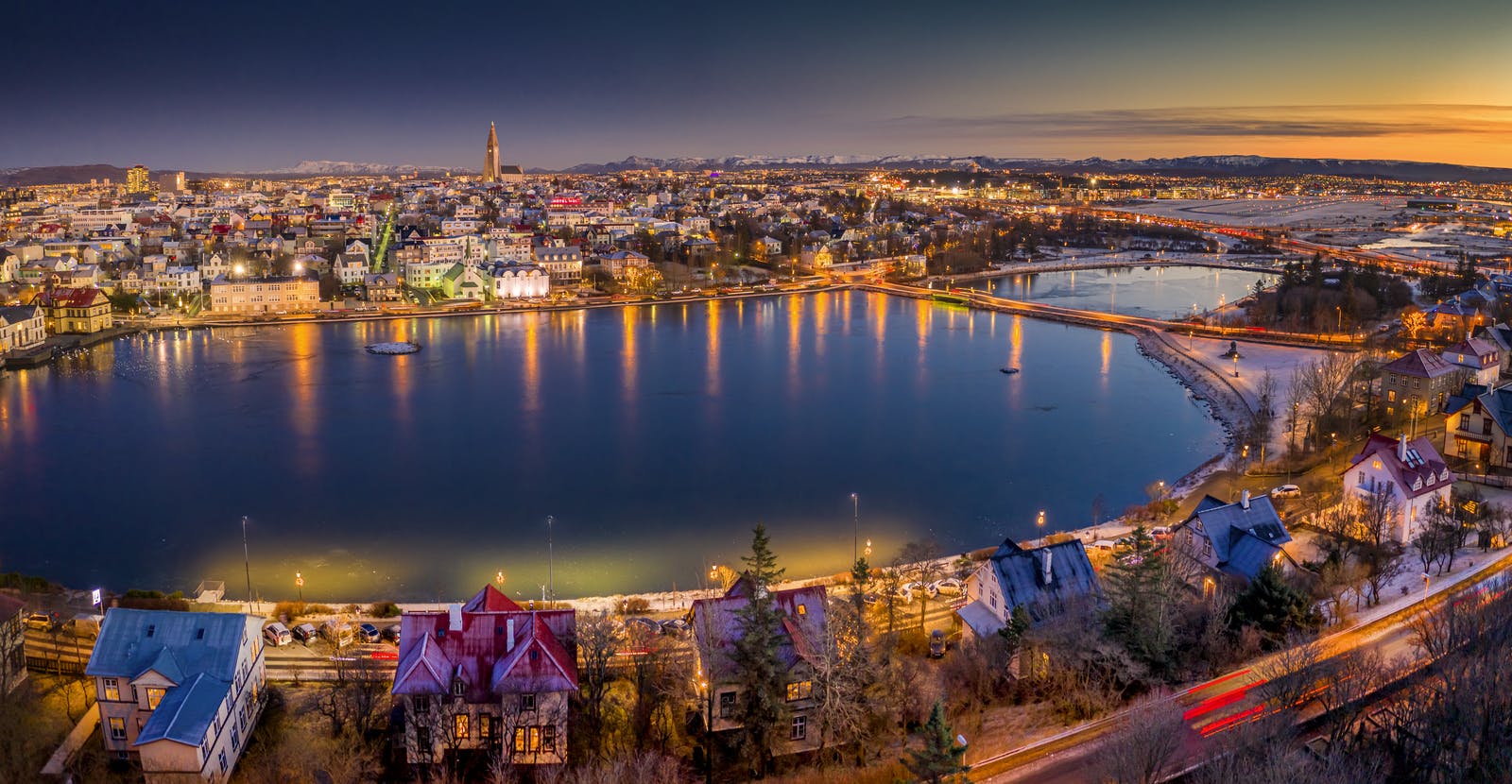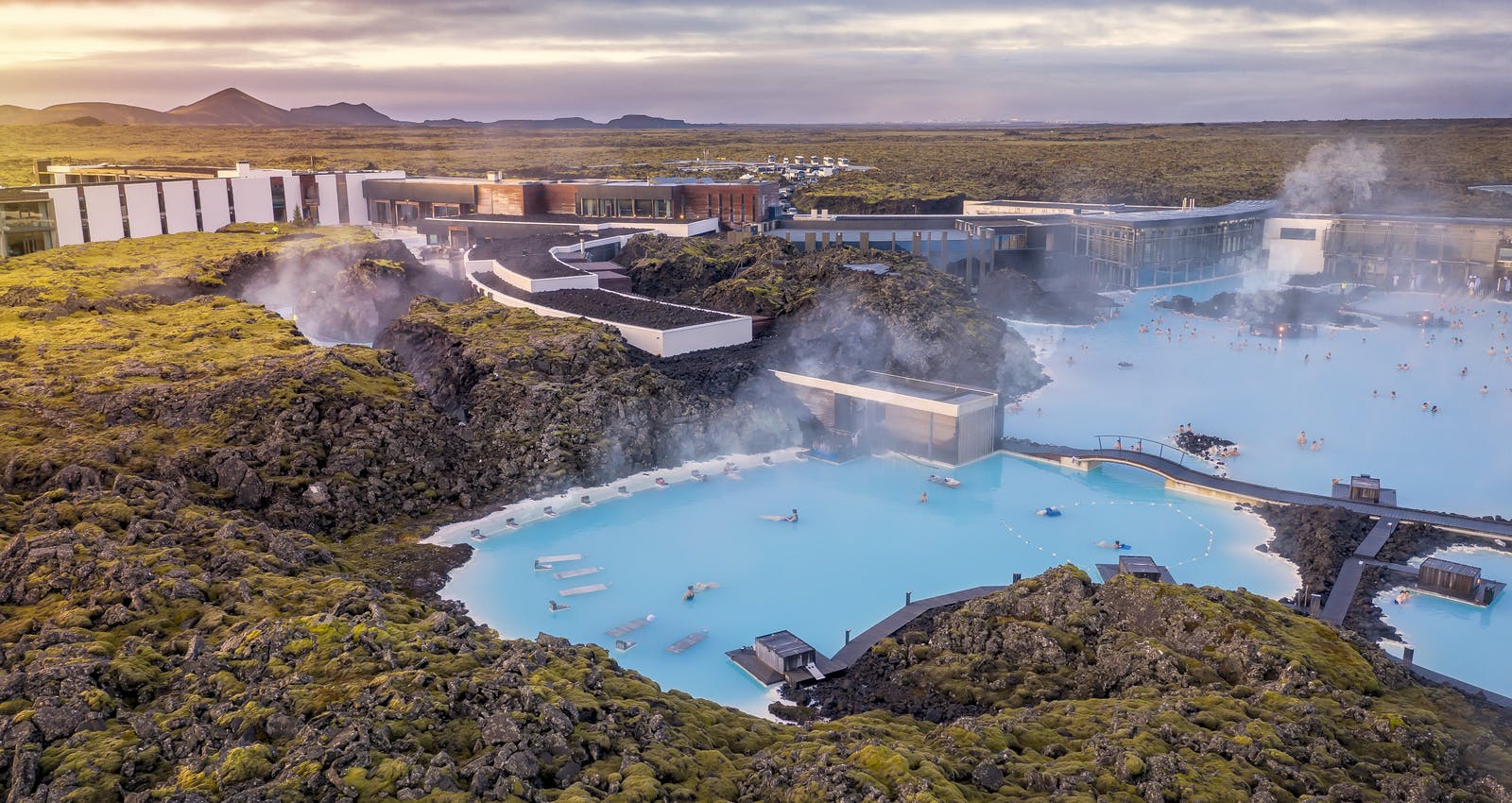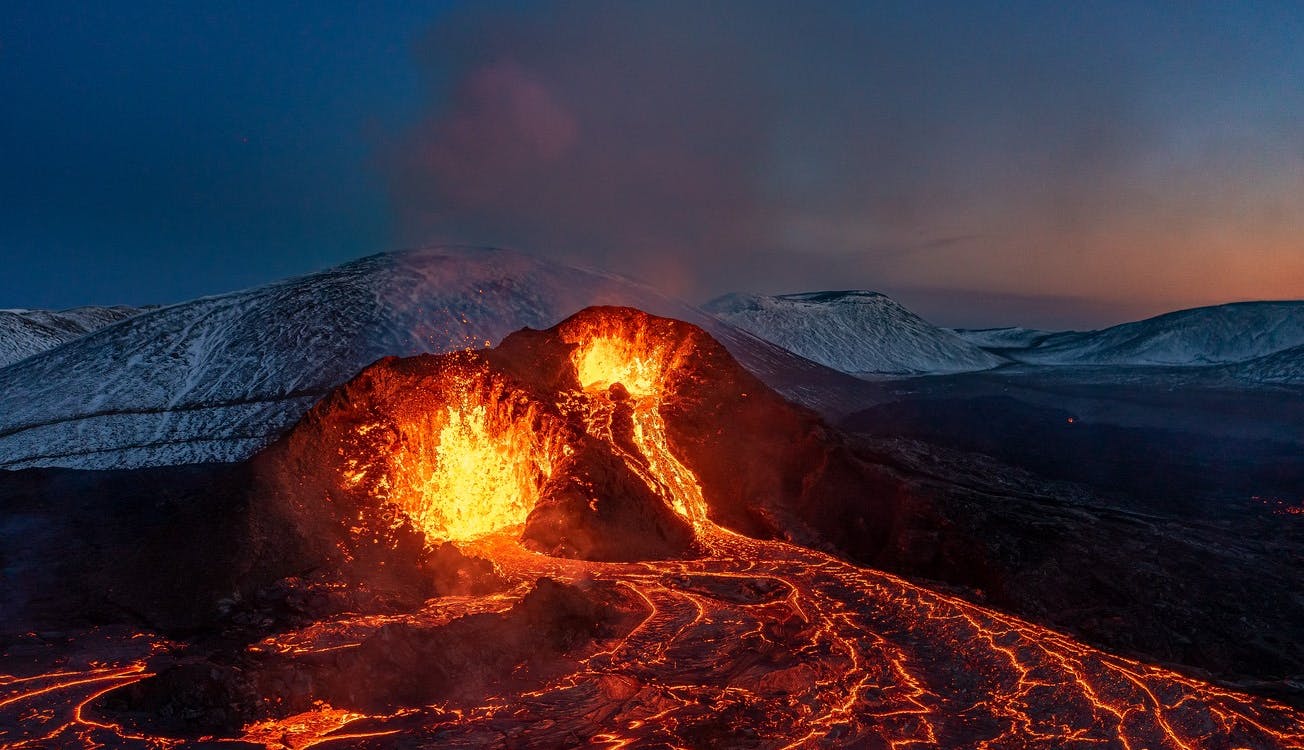
Things To Do In Reykjavík In March
Reykjavík in March is where winter meets spring. Snow still falls, but daylight stretches longer each day, giving the city a lively and hopeful feel. The sun shines for around 13 hours by the end of the month, perfect for exploring Iceland’s capital while still enjoying a touch of winter magic.
This time of year offers a blend of icy landscapes, cultural events, and cozy indoor experiences. Whether you love nature, music, or warm pools, there are plenty of things to do in Reykjavík in March that show Iceland’s unique character.
1. Relax in the Blue Lagoon

To kick off your list of things to do in Reykjavík in March, let’s start with what is arguably the city’s biggest tourist attraction: The Blue Lagoon. If you’ve seen promotional shots of Iceland showing people relaxing in steaming pools of opaque vivid blue water, with white mud packs on their faces, they were probably taken at this iconic geothermal complex.
Located just a minor detour away from the road between Keflakvík Airport and Reykjavík, The Blue Lagoon is easy to visit on your way into or out of the country, and huge numbers of tourists do.
This expansive man-made lake of naturally heated water is rich in silica, minerals and algae, from which it gets its characteristic cloudiness as well as its renowned skincare benefits. The water comes from the nearby Svartsengi geothermal plant, which extracts it boiling hot from deep in the earth. The plant uses the heat to generate electricity and hot water for the surrounding towns, then passes the water on (slightly cooler!) for tourists to relax in.
The Blue Lagoon is open all year round, but we recommend a March visit to avoid the midsummer crush. Also, with a good chance of snow in March, if you’re lucky, you’ll experience luxuriating up to your neck in hot spring water while snowflakes drift down on your head.
Note: That the Blue Lagoon may be closed if there is high seismic activity or an active eruption in the area. Always check Blue Lagoon's official website for opening information.
If closed, there is also an amazing lagoon in Reykjavík, Sky Lagoon.
2. Visit Iceland’s Volcanic Wonders
If you love adventure, a trip to Geldingadalir is a must. This valley east of the Blue Lagoon became world-famous after the Fagradalsfjall volcano erupted in March 2021. The eruption filled the valley with lava, creating a dramatic new landscape.
Today, you can hike to the site and see the cooled lava fields up close. The trail is about 14 kilometers round trip and takes you over hilly ground, so wear sturdy shoes and bring warm layers.
Want to explore Iceland’s volcanic power without the hike? Head to Perlan in Reykjavík. Its interactive Lava Show and Forces of Nature exhibitions explain how volcanoes, earthquakes, and geothermal energy shape Iceland. You can see, hear, and feel the power of nature in a safe, immersive environment, a must-see for curious visitors in March.
3. Experience Perlan’s Wonders

Perlan is one of Reykjavík’s most iconic attractions, and it’s perfect for a chilly March day. The museum combines science, nature, and art in one stunning glass-domed space. The Lava Show exhibit gives you stunning insights into the Geldingadalir eruption, explaining the science behind this awesome geological phenomenon which sits at Iceland’s very core.
Perlan also features volcanoes in its Forces of Nature exhibition, an exciting glimpse into the forces of Icelandic nature, which also include earthquakes and geothermal energy. Earthquakes are a routine part of life in Iceland and always precede a volcanic eruption.
Geothermal energy is also the norm in Iceland, it heats over 90% of the nation’s buildings, and our awesome Forces of Nature exhibit will give you all the geothermal background you need to make the most of your visit to The Blue Lagoon.
4. Celebrate Beer Day!
Back to more city-related attractions to add to your list of things to do in Reykjavík in March. On the first day of this month, every year, Icelanders celebrate beer. While that doesn’t seem like a bad idea in itself (at least if you’re Homer Simpson), it does have a historical reason.
Until the 1st of March 1989, full-strength beer was illegal in Iceland. The ban dated back some 74 years, but by the eighties, it had become obvious that the law was somewhat pointless. Pragmatic Icelanders were simply buying low-alcohol beer in bars, which was legal, and throwing a shot of spirits in.
It wasn’t too long before the Icelandic parliament repealed the law, and the day is now marked every year by Icelanders… well, drinking beer! Stroll down Laugavegur Street to witness the Icelanders in action!
5. Enjoy Reykjavík’s Music Scene

March also brings the Music Experiment Festival (Músíktilraunir), a showcase for young Icelandic talent. This competition has discovered some of Iceland’s best-known musicians, including Of Monsters and Men.
The event takes place in Harpa, Reykjavík’s stunning glass concert hall by the harbor. Even if you don’t attend the festival, visiting Harpa is one of the best things to do in Reykjavík in March. Its architecture and ocean views make it one of the city’s most photogenic spots.
6. Celebrate Ash Wednesday
The coming of spring brings with it the advent of Lent in the Christian calendar, and its start, Ash Wednesday, or Öskudagur in Icelandic, falls on the March 5th, 2025. Although for most Icelanders, the period of Lent now has no religious significance, it has given Icelandic society three special days that are widely observed, each with its own customs.
On Öskudagur, children get the day off school so that they can dress up in costumes to go around shops and businesses, singing for candy or other treats. This passing similarity to the North American custom of trick or treating sometimes leads visitors to refer mistakenly to Öskudagur as ""Icelandic Halloween"", but they're very different customs with separate roots. You might like to take some candy out with you in case you're lucky enough to be treated to a song.
The day before Öskudagur, March 4th, 2025 this year, is called Sprengidagur, which translates as Explosion Day and is the equivalent of Shrove Tuesday in other cultures. It's the day on which Christians traditionally ate all that was left in the larder before starting the fasting period of Lent. In Iceland, that meant making a huge stew of salted lamb, split peas and other vegetables and then eating it to the point of bursting! On Sprengidagur, you should be able to find this stew on the menu in traditional restaurants, such as Kaffi Loki opposite Hallgrímskirkja. See the top restaurants in Reykjavík.
And the day before Sprengidagur, March 3th, 2025 this year, is special too and is also about stuffing your face before Lent. On this day, known as Bolludagur (Bun Day), Icelanders buy or bake bollur: pastry buns filled with cream and jam and topped with chocolate icing. Kids and adults alike tuck into piles of these sweet delights, and you can join in the high-carb fun at any bakery in town."
FAQs

Is March a good month to go to Reykjavík?
Yes, March is one of the best months to visit Reykjavík. The city transitions from winter to spring, with longer days and plenty of snow for that true Nordic feel. It’s an ideal mix of crisp air, bright skies, and fewer crowds.
Can you see the northern lights in March in Reykjavík?
Yes, March offers excellent chances to see the northern lights, especially around the spring equinox. Clear skies and long nights make it a great time for aurora hunting. If you miss them outdoors, Perlan’s Áróra Planetarium offers a guaranteed northern lights experience in stunning HD. Check out the Aurora forecast for accurate data on when to spot them in the night skies.
Can I wear jeans in Iceland in March?
You can wear jeans in Reykjavík, but they’re not the best for outdoor exploring. Iceland’s weather can be wet and cold, so waterproof pants and warm layers are better. Save your jeans for evenings out in the city.
Is Reykjavík snowy in March?
Yes, snow is common in Reykjavík throughout March. Streets and mountains often stay covered, creating a beautiful winter scene. Pack waterproof boots and dress warmly for exploring.
How rainy is Iceland in March?
March brings a mix of snow, rain, and sunshine to Reykjavík. The weather changes quickly, so bring a waterproof jacket and dress in layers. Expect to experience several seasons in one day!
What is the cheapest month to visit Iceland?
January is usually the cheapest time to visit Iceland due to low demand. March offers moderate prices, with fewer tourists and good deals before the summer rush. It’s a great balance between affordability and daylight.
How many days in Reykjavík is enough?
Three days is ideal for exploring Reykjavík’s highlights. You’ll have time to visit Perlan, see the northern lights, and enjoy local culture. If you plan day trips, consider staying a week to experience more of Iceland.







